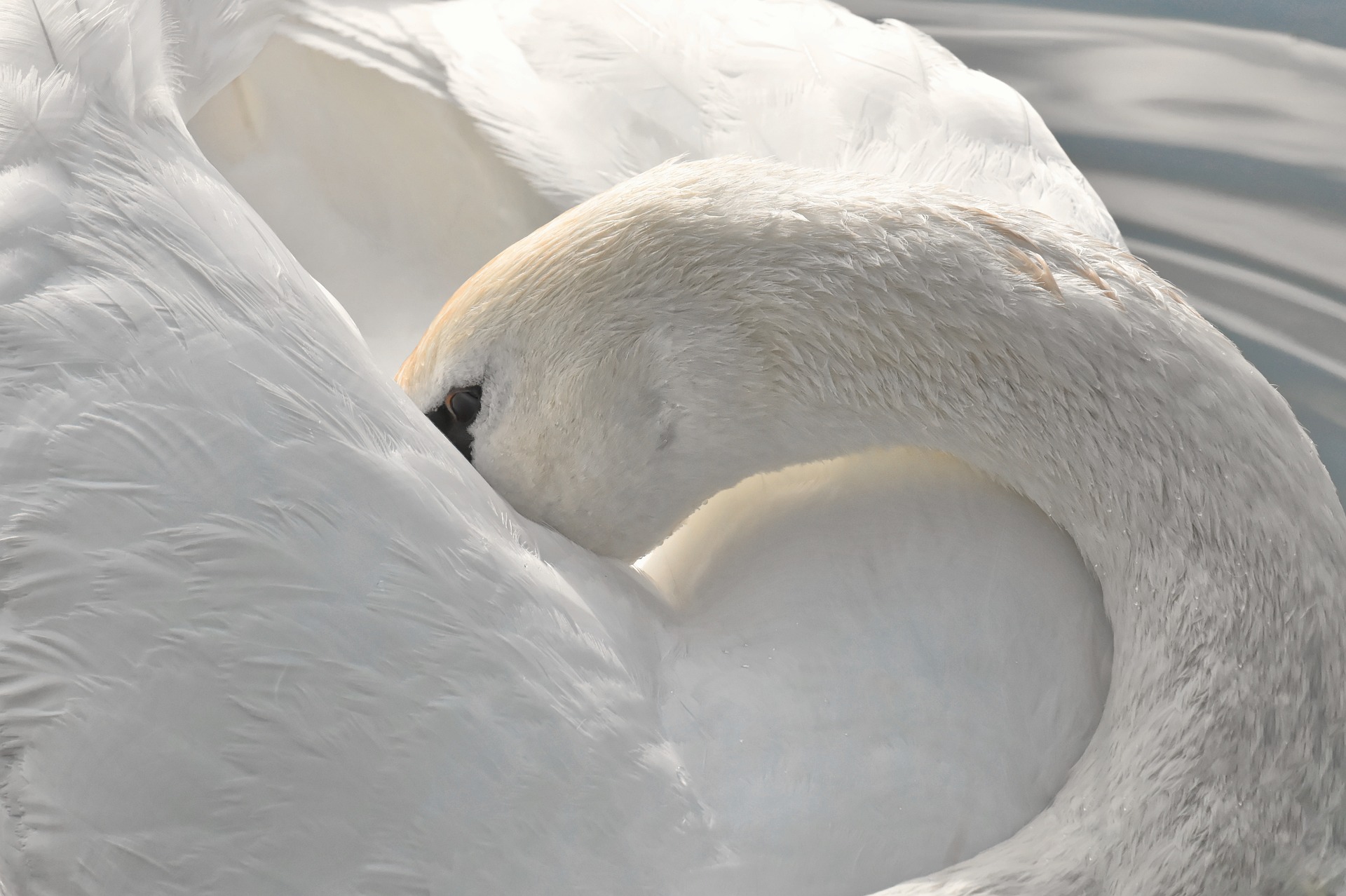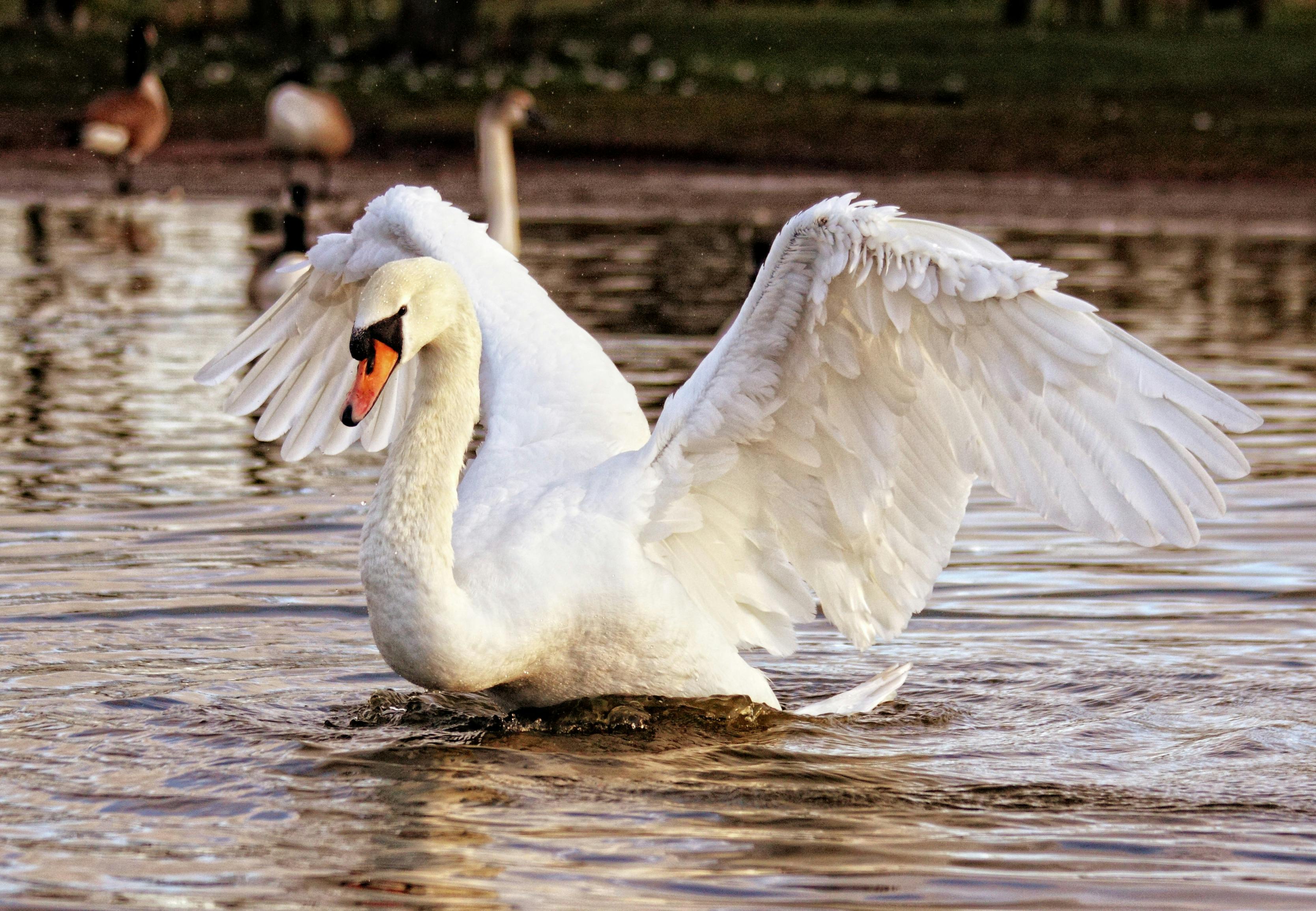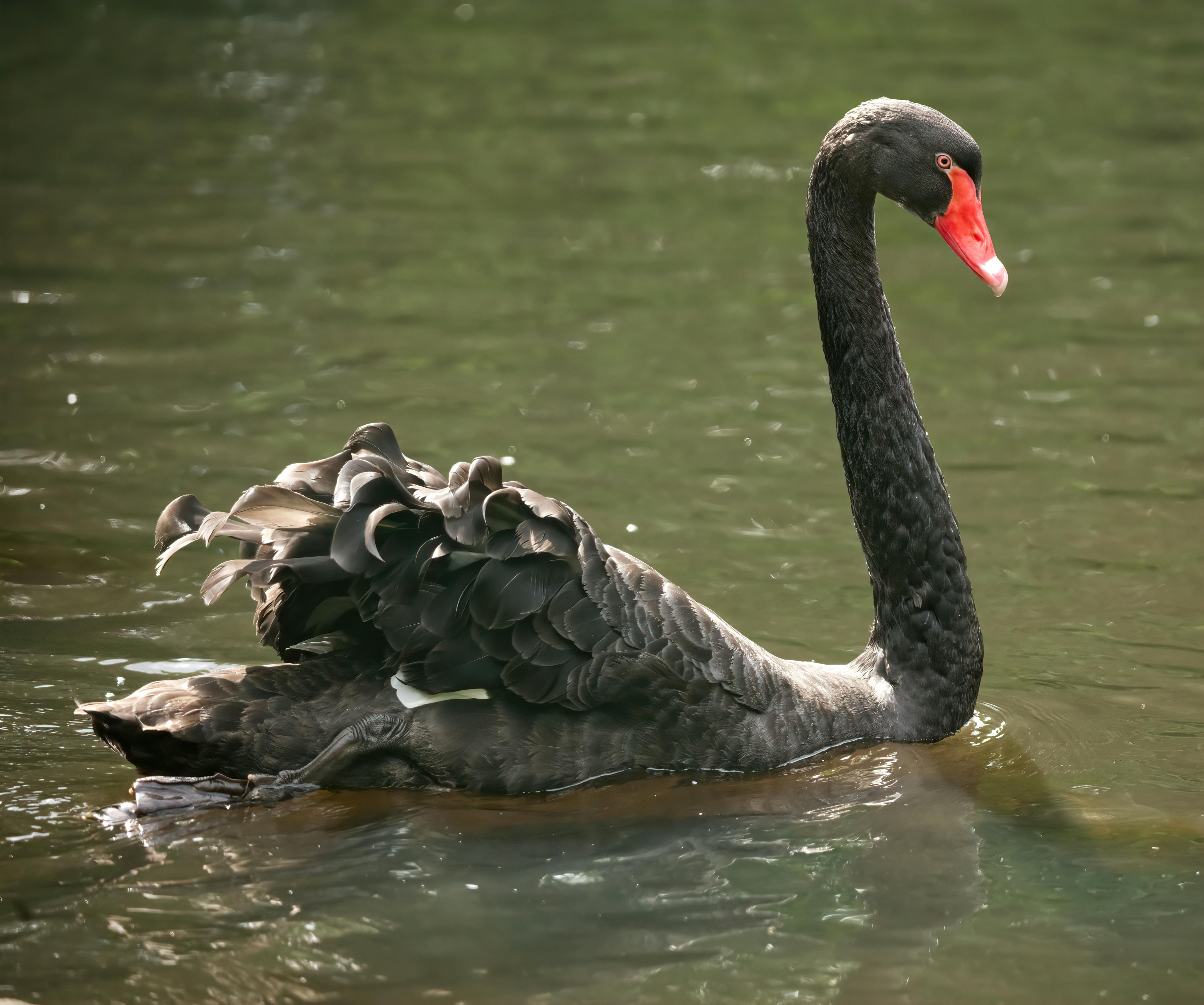
Overview
Swans are large waterfowl known for their elegance, graceful movements, and striking appearance. With long, S-shaped necks and large bodies, they have captivated the human imagination for centuries, often symbolizing love, beauty, and fidelity. Swans can be seen in both white and black plumage, depending on the species. There are several species of swans, each with unique characteristics and habitats.
Habitat
Swans typically inhabit lowland freshwater wetlands, including marshes, lagoons, lakes, ponds, and slow-moving rivers. They are often found in man-made bodies of water like reservoirs. Some species, such as the Mute Swan, are also comfortable in brackish or saltwater environments. Swans are distributed across the globe, with Northern Hemisphere species like the Mute, Trumpeter, and Whooper Swans, while species such as the Black Swan and Coscoroba Swan are native to the Southern Hemisphere, particularly Australia and South America.
Mute Swan

Appearance: White plumage and orange bill with a black knob at the base of the bill.
Classification: Cygnus olor
Length (cm): around 125-160
Wingspan (cm): around 150-239
Weight (kg): between 8.62-11.79
Life Span: 15-25 years
Native: native to EuroSiberia and North Africa
Migration
Swans are migratory birds, traveling long distances during the winter months (September to October). They typically fly in flocks of 20 to 30, sometimes more, and form a V-shaped formation, with the leader at the front. When the leader gets tired, another swan takes its place. This formation helps with communication and efficiency during migration. Unlike geese, who tend to follow coastlines and stop at various points along their route, swans prefer to fly straight to their destination unless forced to stop by weather.
Endangered Status
Swans are not considered endangered. All swan species are classified as “Least Concern” by the International Union for Conservation of Nature (IUCN), indicating stable or increasing populations.
Black Swan

Appearance: Black plumage with a bright orange and a bit reddish bill.
Classification: Cygnus atratus
Length (cm): around 110-142
Wingspan (cm): around 160-201
Weight (kg): between 3.7-9
Life Span: 12-40 years
Native: southeast and southwest regions of Australia
Diet
Swans are mostly herbivores, feeding on aquatic vegetation like pondweeds, algae, and widgeon grass. They may occasionally consume small insects or tadpoles. Their serrated bills are designed for grasping plants, and they can sometimes catch small fish, mollusks, or worms.
Behavior
Swans are known for their strong family bonds. They mate for life, and males play an active role in nest building and incubation. They also perform elaborate courtship dances as part of their mating ritual. Swans typically lay between 3 and 8 eggs per breeding season. Due to their strong protective instincts, they are very territorial, especially during the breeding season.
Fun Fact
While swans from the Northern Hemisphere are typically all white, species from the Southern Hemisphere, like the Black Swan, have black feathers with white markings. Swans have also been introduced to North America, particularly Mute Swans, which were brought in the late 1800s and early 1900s for ornamental purposes in parks and ponds. Some of these swans escaped and established the wild populations we have today.